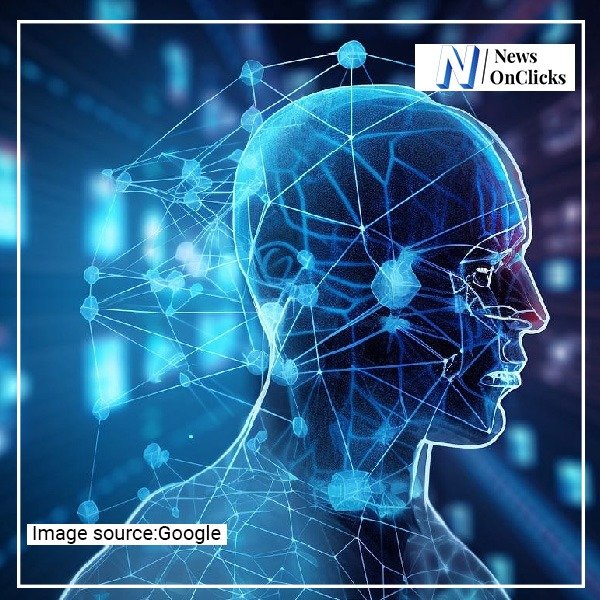
In today’s fast-paced world, mental health has become an important focus for many individuals and organizations alike. With the rise of digital tools and platforms, the intersection of technology and mental health has sparked a revolution in the wellness industry. From meditation apps to virtual therapy sessions, technology offers innovative ways to manage stress, anxiety, depression, and other mental health challenges. In this article, we will explore how tech can be leveraged for mental health, the benefits it brings, and some of the latest trends in the field.
The Growing Need for Mental Health Solutions
The global mental health crisis is real, and it’s affecting millions of people every year. According to the World Health Organization (WHO), approximately 1 in 4 people will experience a mental health disorder at some point in their lives. With an increasing focus on work-life balance, productivity, and performance, many individuals are experiencing heightened stress levels, anxiety, and depression. The mental health landscape is changing, and people are actively seeking ways to manage and improve their mental well-being.
Traditional methods, such as face-to-face therapy, can be effective, but they may not be accessible to everyone due to cost, time constraints, or lack of mental health professionals. As a result, people are turning to technology as a viable solution. Technology has revolutionized the way we approach mental health, making wellness more accessible, convenient, and personalized.
How Technology Can Improve Mental Health
Technology offers several solutions that can positively impact mental health. Here are some ways it is being used to improve wellness:
1. Mental Health Apps for Self-Care
One of the most popular ways people are using technology for mental health is through mobile apps. These apps cater to various aspects of mental well-being, such as stress reduction, mindfulness, mood tracking, and more. Some popular mental health apps include:
- Calm: This app offers meditation, relaxation techniques, sleep stories, and mindfulness exercises to help users manage stress and anxiety.
- Headspace: Headspace is a mindfulness app that provides guided meditations, breathing exercises, and sleep aids to improve focus and reduce anxiety.
- Moodfit: Moodfit is a comprehensive mental health app that helps users track their mood, sleep patterns, exercise routines, and offers mental health resources.
- Sanvello: This app offers Cognitive Behavioral Therapy (CBT) techniques and mindfulness tools to manage anxiety, depression, and stress.
These apps provide users with tools that allow them to practice mental wellness on their terms, anytime and anywhere. Whether it’s a quick breathing exercise or a full meditation session, these apps empower individuals to take control of their mental health.
2. Virtual Therapy and Online Counseling
Virtual therapy platforms have grown in popularity, especially in the wake of the COVID-19 pandemic, when in-person therapy became more challenging. Online counseling services allow people to speak with licensed therapists from the comfort of their homes. Popular platforms like BetterHelp, Talkspace, and 7 Cups connect users with qualified mental health professionals through secure chat, video calls, or phone sessions.
Virtual therapy is convenient and accessible, allowing people to seek help regardless of their location. It also reduces the stigma often associated with seeking therapy, as individuals can engage with professionals without the fear of being judged.
3. Wearable Devices for Stress and Health Monitoring
Wearable devices such as fitness trackers and smartwatches are not just for monitoring physical health—they also play a significant role in mental wellness. Devices like Fitbit, Apple Watch, and Oura Ring offer features like heart rate monitoring, sleep tracking, and stress measurement. These wearables can track data like heart rate variability, which is a key indicator of stress and overall mental health.
For example, Whoop is a wearable device that tracks recovery, stress levels, and sleep, providing users with insights into how their physical and mental health are interconnected. By tracking stress triggers and sleep patterns, users can make data-driven decisions to improve their mental well-being.
4. Virtual Reality for Therapy and Relaxation
Virtual reality (VR) is emerging as a powerful tool for mental health therapy. VR can help people confront and process trauma, manage anxiety, and practice relaxation techniques. For example, VR therapy can immerse users in environments that trigger stress, helping them build resilience and coping strategies.
Limbix, a VR therapy company, uses virtual reality to help people with anxiety, particularly in situations like public speaking or social situations. The immersive experience can help users face their fears in a controlled, safe environment, making it easier to build coping mechanisms.
In addition to therapy, VR is also being used for relaxation and stress reduction. TRIPP, a VR app, offers a virtual experience designed to promote mindfulness, relaxation, and emotional well-being. By offering a calming environment, VR allows users to de-stress and recharge mentally.
5. Artificial Intelligence (AI) for Mental Health
Artificial intelligence is another exciting advancement in the mental health space. AI-powered platforms are designed to provide personalized mental health support by analyzing a user’s behavior, preferences, and interactions. These platforms can offer tailored suggestions for self-care, relaxation techniques, and mental wellness exercises.
Woebot is an AI chatbot designed to offer mental health support. It uses principles from Cognitive Behavioral Therapy (CBT) to help users manage their emotions and stress. The bot provides real-time support and tracks the user’s progress, making it a convenient and accessible option for those looking for quick mental health solutions.
Additionally, AI can be used to analyze patterns in language and behavior, allowing mental health professionals to monitor patients and offer more precise, targeted interventions.
The Benefits of Tech-Driven Mental Health Solutions
The integration of technology into mental health care offers numerous benefits:
1. Accessibility and Convenience
One of the key advantages of using tech for mental health is accessibility. Mental health apps, online therapy, and wearables are available to anyone with an internet connection. People can access therapy and wellness tools from the comfort of their own homes, making it easier to seek help and engage with mental health resources on their own schedule.
2. Anonymity and Privacy
Many individuals feel uncomfortable discussing their mental health due to stigma or privacy concerns. Technology provides a level of anonymity and privacy, allowing people to engage with mental health tools without fear of judgment. Virtual therapy platforms and AI-powered mental health apps offer a discreet way for individuals to get the support they need without revealing personal details.
3. Personalization and Customization
Tech-driven solutions can offer highly personalized experiences based on the user’s needs. Apps, wearables, and AI-powered platforms analyze user data to deliver tailored recommendations, exercises, and resources. This level of personalization can help individuals receive support that is unique to their situation.
4. Improved Engagement
Technology has the power to engage users in ways traditional methods cannot. Interactive apps, gamified experiences, and virtual environments make mental wellness more enjoyable and easier to stick with. The gamification of mental health apps, for example, provides a sense of achievement that can motivate users to continue practicing wellness techniques.
Challenges and Considerations
While tech offers significant benefits for mental health, it’s essential to recognize some of the challenges that come with its use. One concern is the potential for over-reliance on technology, leading to a lack of in-person social interactions or face-to-face support. It’s important to strike a balance between using technology as a tool for wellness and maintaining real-world connections and support systems.
Additionally, privacy and data security are crucial concerns when using digital platforms for mental health. Users should ensure they are using reputable platforms that adhere to strict data protection regulations.
Conclusion
The intersection of technology and mental health has the potential to transform the way we approach mental wellness. From self-care apps and virtual therapy to wearable devices and AI-powered platforms, technology offers innovative solutions to help individuals manage stress, anxiety, depression, and other mental health challenges. By making mental health resources more accessible, personalized, and engaging, technology is breaking down barriers and paving the way for a more holistic approach to wellness. As we continue to explore new advancements in tech-driven mental health solutions, it’s clear that technology will play a vital role in shaping the future of mental well-being.









